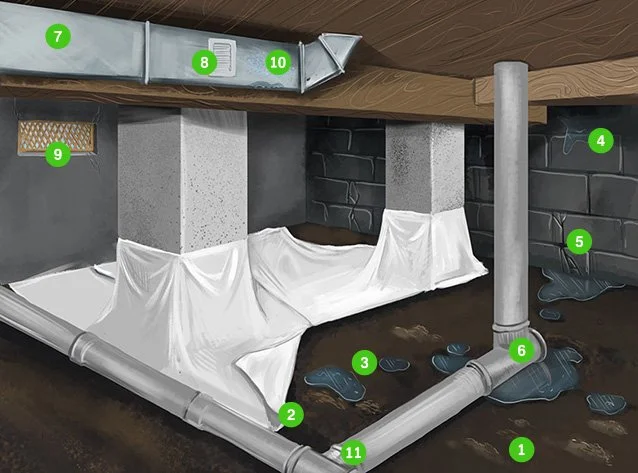What Causes Mold In Your Home?
If you have mold in your household, there may be a number of reasons why it's growing. You'll want to find out what is causing the problem, and how you can prevent it from reoccurring.
Mold is a type of fungus that thrives in areas with high humidity. It produces spores that can cause a variety of health problems, including headaches, respiratory problems and allergies.
Moisture
Moisture is a term used to describe the presence of water in a material. In general, most materials contain at least a small amount of moisture in their molecular makeup.
Mold thrives in areas of moisture, like leaky pipes and showers. It also thrives on porous surfaces like cardboard, drywall and carpeting.
Its growth can damage furniture, rugs and clothing. It can also cause odor problems, making your home smell musty or even foul.
The key to preventing mold from growing in your household is ensuring that all moisture sources are eliminated. That includes fixing leaks, reducing humidity levels with an air conditioner and getting the area properly ventilated by using exhaust fans.
Its spores are invisible to the naked eye and float through outdoor air, then into your house where they land on a variety of surfaces. When they inevitably land on the damp, warm surfaces inside your home, mold can begin to grow within 24 hours.
Poor Ventilation
Poor ventilation leads to dampness that mold thrives on. In addition, mold spores are a major cause of indoor air pollution.
Exposure to mold can lead to respiratory symptoms like stuffy nose, throat discomfort, coughing, and wheezing. This can also affect children and people with immune suppression or underlying lung disease.
It may also cause skin irritation or eye inflammation. If these symptoms persist, you should seek medical attention.
Another common cause of mold growth in the home is condensation. This occurs when water collects on walls, ceilings, and windows.
Keeping humidity levels low can help prevent mould. You should check your home’s air quality regularly, and use a dehumidifier when necessary.
You can also keep the temperature of your home as low as possible. This is especially important during the winter, as colder temperatures can trap moisture and make it harder for your home to ventilate properly.
Structural Damage
When mold growth is allowed to go unchecked it can have a major impact on your home's structure. It can weaken wood, cause rotting and cause other issues, such as dry rot.
A building's structural integrity is based on its foundation, walls, roof, beams and columns. When any of these elements become damaged, the whole structure is weakened and can collapse.
Typically, this damage is the result of climatic conditions (temperature straining, material freeze and thaw, rain, wind). Seismic activity (earthquakes) can also damage structures.
Another cause of structural damage is flaws in the construction of a building. This can be in the form of faulty concrete or metal, misplaced reinforcing bars and rusting of steel pipes and foundations.
If you suspect that your home has experienced structural damage, it's essential to get a professional assessment immediately. This will help you determine if any further damage may be occurring and how much it will cost to repair the structure.
Poor Cleaning
A home that is not cleaned frequently or properly can lead to mold growth. This is because mold needs moisture and a food source to thrive.
Many people, especially those with asthma, allergies, or weakened immune systems are highly sensitive to mold and its spores. They may experience symptoms such as itchy eyes, runny nose, congestion, and coughs.
This sensitivity often exacerbates symptoms of other respiratory problems or illnesses like bronchitis and pneumonia. Children and the elderly are also particularly susceptible to mold-related health problems.
The most common way to treat mold is by using a bleach solution. While this is effective for killing mold, it can be ineffective for removing fungi from porous surfaces such as drywall. A more effective way to treat mold is by scrubbing a moldy surface with a mixture of white vinegar and hydrogen peroxide. This natural treatment can kill the most common types of mold. It is also a very safe and effective method for preventing mold growth in the future.

